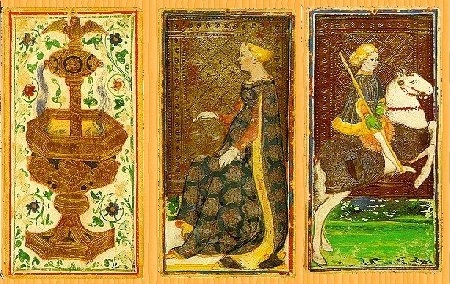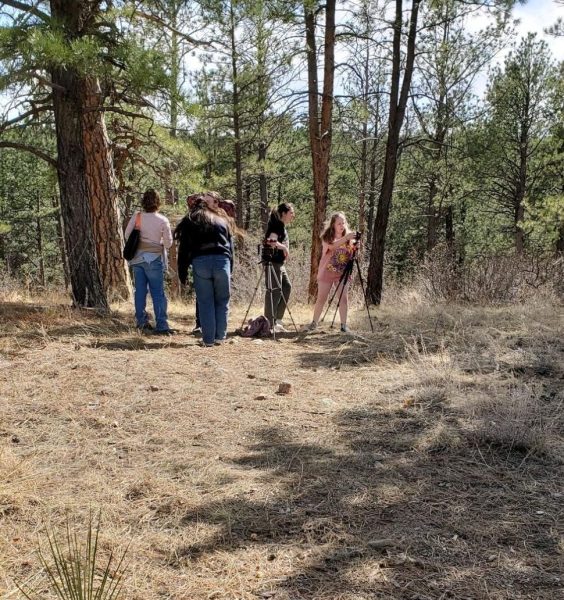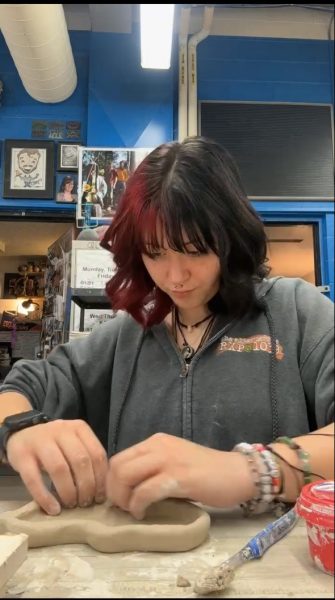Pseudosciences: Fun Fallacies or Dazzling Divinators?

Tarot cards are displayed to show the cards used during the readings. Labeled for reuse by Wikipedia,
You sit down awkwardly on a stool in a dimly lit room. The strong smell of incense smoke floods your nose; soft instrumental music plays from an obscure speaker in one shadowy corner, complimenting quiet conversations. In front of you, a woman shuffles a deck of tarot cards covered in intricate drawings. She spreads the deck across the small wooden table that brushes against your hunched knees.
“Pick three cards; one for your past, one for the present, and one for the future.”
Trembling, your hands hover over the cards. Am I doing this right? You think to yourself doubtfully as you grab three cards at random and place them face-down on the table.
The woman reads your fortune. Chills run up your spine as you realize something about the cards:
They’re 100% accurate.
Tarot cards, along with astrology and palm readings, are considered pseudosciences. According to Merriam-Webster, pseudosciences are “a system of theories, assumptions, and methods erroneously (incorrectly) regarded as scientific.”
How do they work?
Astrology (think zodiac signs) is one of the oldest pseudosciences in the world, tracing its origins back to Babylonian times; however, it has soared in popularity in recent years, especially among Millennials and Gen Z in the age of the internet.
According to The Atlantic, “Astrology expresses complex ideas about personality, life cycles, and relationship patterns through the shorthand of the planets and zodiac symbols. And that shorthand works well online, where symbols and shorthand are often baked into communication.”
Astrology divides the sky into 12 pieces that each take up 30 degrees to form a whole 360-degree circle. Each section is ruled by a zodiac sign (for example, Aries or Scorpio), and every 28 or so days, the sun enters a new section of the sky ruled by that sign. If someone says it’s Libra season, that means the sun has entered the “Libra” degrees of the sky, and if a child is born during that season, their sun sign is a Libra!
Many people enjoy reading birth charts, astrological maps recorded at the time someone is born. A common misconception is that astrology divides people into only 12 categories by their sun sign, but in reality, every celestial body in the solar system affects the birth chart, from the moon all the way to Pluto, because every “planet” will be traveling in a different section of the sky at the time of someone’s birth.
Some believe that astrology can even predict events or behaviors–or, at least, predict what type of events or behaviors may occur according to what conditions and signs the planets are in at any given time and how they affect one’s birth chart. Mercury retrograde (retrograde being an optical illusion that makes a planet appear to be moving backwards), a condition in the planet of communication that may cause miscommunication, has been a common celestial event people use to explain their everyday lives.
Tarot cards are much younger, tracing their origins back to ordinary card games. “[U]sing cards for playful divination probably goes back…to the 14th century, likely originating with Mamluk game cards brought to Western Europe from Turkey,” according to Collectors Weekly.
Tarot cards are many forms of divination. They commonly become used to measure potential and future outcomes of a person, event or both.
A tarot deck consists of 78 cards. The first 22 cards are the Major Arcana; they have a symbolic meaning focused on the material world, the mind, and the realm of change. The rest of the 56 cards that remain are the Minor Arcana, these are divided into four groups of suits: swords, Pentacles or Coins, Wands and Cups.
Many people enjoy tarot card readings; showing their past, present and future outcomes can be exciting for many depending on the outcomes that come from the cards. The outcomes can mean many different things, it’s all in the way of the cards whether they end positively or negatively.
One example of a Tarot card reading comes from Marie Lane, a card reader who owns a blog called Marie Lane Tarot.
She performed an example reading for a blog reader, Tara, writing, “You’re ready to move on to a more fulfilling career. You’ve been inspired in some way, and you need to let go of unhelpful anxiety and self-criticism that is preventing you from making a clear, realistic plan and pursuing it. The exciting news is that if you work on these things, the Tarot shows great accomplishments as the outcome. The Magic card shows a substantive personal transformation in which you come into your own as a powerful, resourceful person. The Magician has the power to transform themselves and their lives. You really are capable of so much! Pretty exciting!”
Palm readings have an unknown origin; however, they are thought to have begun in ancient India. This spread throughout the Eurasian Landmasses to China, Tibet, Persia, Egypt and Greece. In fact, Aristotle described palm readings in his work De Historia Animalium (The History of Animals) 2,500 years ago.
“Chiromancy, or palm reading, is the art using the palms of the hands to learn more about a person or tell their future. While it has roots deep within India’s past, today it is one of the most common methods of communicating with the divine,” according to Physics for Today.
Many palm readings were created as a way to challenge the idea that the only way to speak to the divine were through prayer or meditation.
While palm reading is not as popular as other pseudosciences, it is one that happens quite often. Many people go to palm readers expecting the worst possible outcomes, but become surprisingly pleased by the outcomes that take place during their readings. It is most used to communicate with the divine, but is not widely known to those that follow different beliefs.
Pseudosciences: Real or Not?
Some pseudosciences originated in the pre-scientific era, such as astrology. Others developed as games or from places unknown to modern history.
Many people enjoy pseudosciences, taking them into their own lives, learning how to perform tarot card readings, reading astrology calendars and so much more to predict the future in healthy and natural communication with the divine.
People believe wholeheartedly in these pseudosciences, but in truth, they simply can’t be proven by the scientific method, and many scientists dismiss them as simply being a cultural phenomenon rather than a factual occurrence.
But that doesn’t matter to most people. The idea that the stars, cards, or lines in one’s palms can indicate the path of one’s life is intoxicating to many.
It makes their lives feel more meaningful–and really, that matters more than whether they’re real or not. With pseudosciences, life is just an adventure waiting to happen.

Suh dudes! I'm Rosalynne Jones (but I go by Rose) and I'm the Jetstream's Managing Editor. I've been on the Journal for two and a half years! I'm a senior...

Hey, my name's Brittany. I'm a senior and this is my first year writing for the Jetstream Journal. I'm a little bit odd; I like to read comics, play video...







